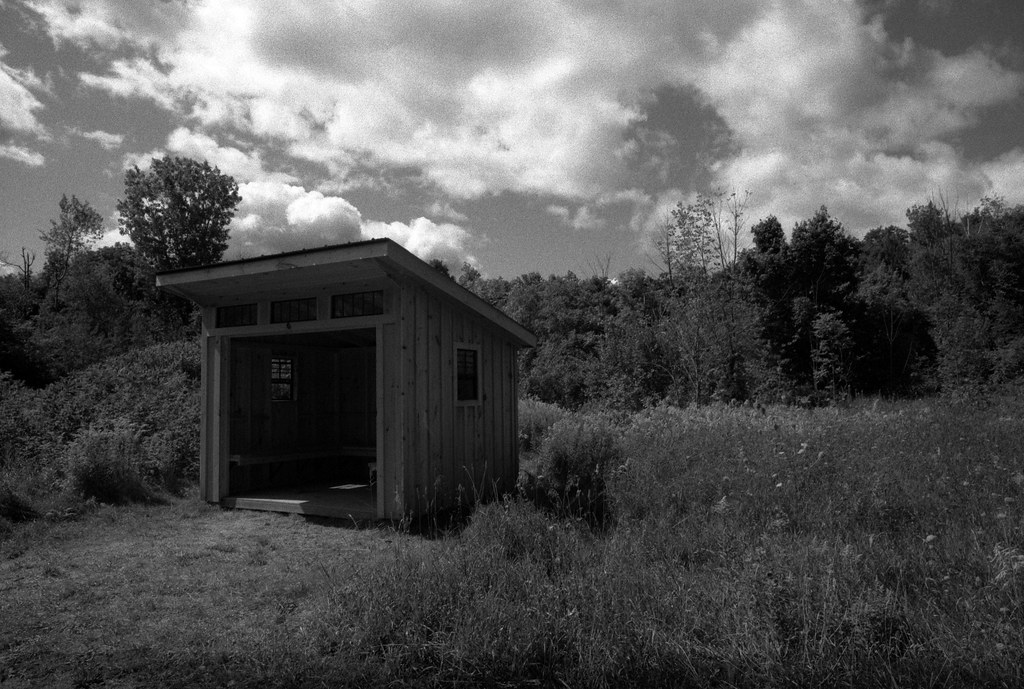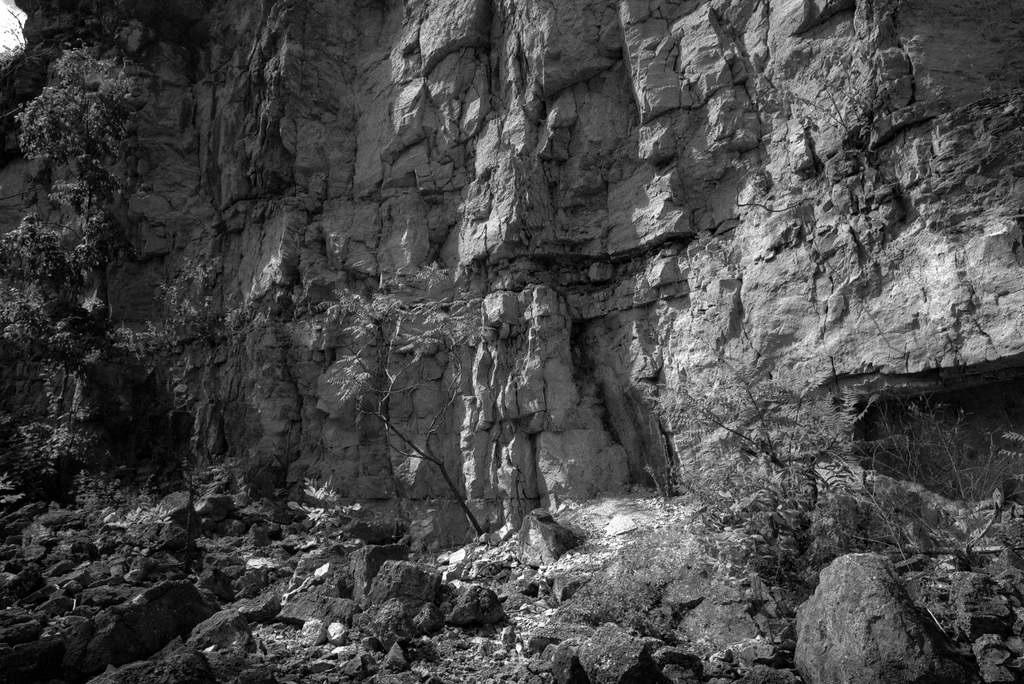And we’re back to Halton Conservation Areas! It’s been a bit of a silent goal this year to try and include every conservation area in the Halton park system. And now that fall is starting to set in; it is time to get back to that goal! This week we’re over at Mount Nemo, another park located on the Niagara Escarpment, but rather than in Milton, this one is located in Burlington, on the other side of the protective shoe that the Niagara Escarpment forms around Milton. Located here is a wonderful surprise; an old limestone quarry and some supporting buildings still stand in ruins.

Nikon FM – AI Nikkor 24mm 1:2.8 (Yellow-12) – Fomapan 200 @ ASA-200 – Adox FX-39 II (1+9) 10:00 @ 20C
The small hamlet of Mount Nemo is located on an outlying plateau of the Niagara Escarpment, the rich limestone cliff that traverses the Province of Ontario from Queenston Heights to the Bruce Penisula. The area’s first inhabitants were of the Neutral Nation, those who did not align themselves with either the Huron-Wendat or Haudenosaunee and were driven off by the Haudenosaunee during the Beaver Wars of the 1650s. The first European settlement came during the survey in 1818, and a small hamlet grew up in the area thanks to the limestone and fertile soil. By the 1830s, log and stone houses dotted the landscape. These early families included Kenney, Aukland, Cousin, Thomas, Colling, Miller and Foster. John Colling is noted for establishing a stagecoach to Milton to collect the mail, bring it back to the hamlet and delivered it by Ed Thomas. Other businesses included a grocery, blacksmith and a small machine shop to produce agricultural tools. While unofficially known as Mount Nemo, establishing a post office in 1906 made the name official. However, it was never incorporated as anything other than a hamlet. The area’s limestone became a major source of aggregate during the construction and expansion of many limited-access freeways through the region; the nearby Nelson Quarry set up a second pit on the other side of Guelph Line in 1958. However, operations would run for only a year before Conservation, Halton recognized the region’s importance to local biodiversity. The quarry shut down after digging a small pit and establishing some roads. Operations ceased in 1959 when Conservation Halton took over the site. Many of these quarry roads formed the core of new hiking trails, and a branch of the Bruce Trail was established through the site. The new Mount Nemo Conservation Area opened to the public in 1971. Many in the former hamlet, now a part of Burlington, are still fighting against further quarry expansion in the region.


The trouble I often find with hiking and having a prime lens and 36-exposures is that all the photos start to look the same after a while. So I made sure that I tried to keep a variety of images in this set. And I also avoided the cliche of putting up a tonne of skyline shots from the main lookout. Instead, I went with one from a little further along that second loop, where I could get a clearer view of the lake and the Toronto skyline. While it was clearly visible, having that 24mm focal length prevents it from being clear in the resulting images. Next, a couple from the main trail, including a new feature of a rest shelter. Then a few from under the canopy had me shooting at wide open and 1/30″, but I’m happy with the results. The final two are from the actual quarry itself, which are from down in the quarry pit itself, which has become a favourite feature of the site. I did want to get a shot of the ruins, but they had too many people crawling over them.


Well, it was bound to happen, but now that we’re in September, it is time to start creeping up in speed again, and we’re back on my least favourite film from the Fomapan line, Fomapan 200. Rather than let this get me down, I’m going to be doing my best to try and find a sweet spot for this film over the course of the next nine weeks and find a better way to get the most out of the film. Since I was working under mixed-light, I shot the film at box speed, ASA-200. I went with Adox FX-39 II for the developer at the 1+9 dilution; now, I had used this before but shot the film at ASA-100 and overcooked it, so now shooting at native box speed, I got decent results, a bit grainy in the negative spaces I think a slight over-exposure say ASA-160 might help keep that grain under control. Also, this week I got to use a new piece of gear! I had picked up back in Week 35 a 24mm lens; while only slightly wider than my 28mm, it is rated at f/2.8, so I was glad to be able to get that bit wider, which when working in spaces where you have to watch yourself, it’s nice to have that extra option.


Next week I’m trying something different; rather than focus on a single area, I’m focusing on a single subject. We’re breaking through to the other side.